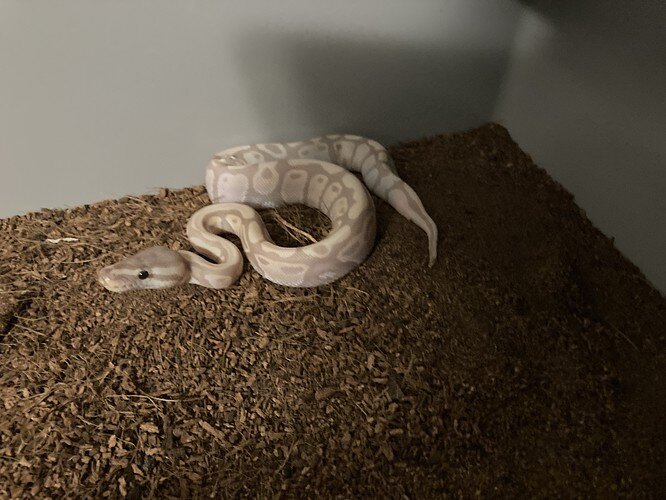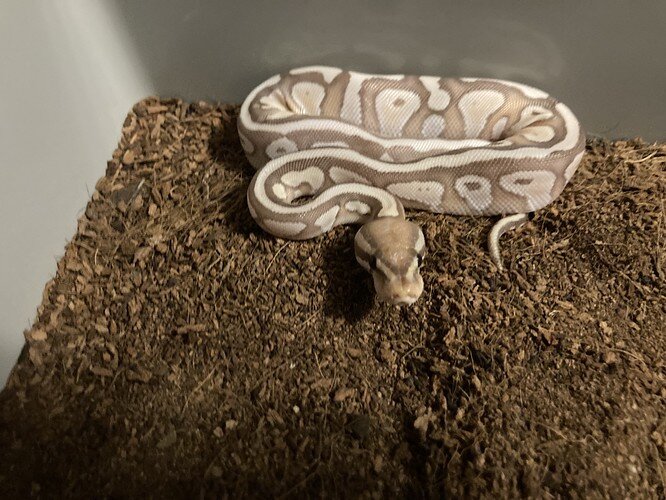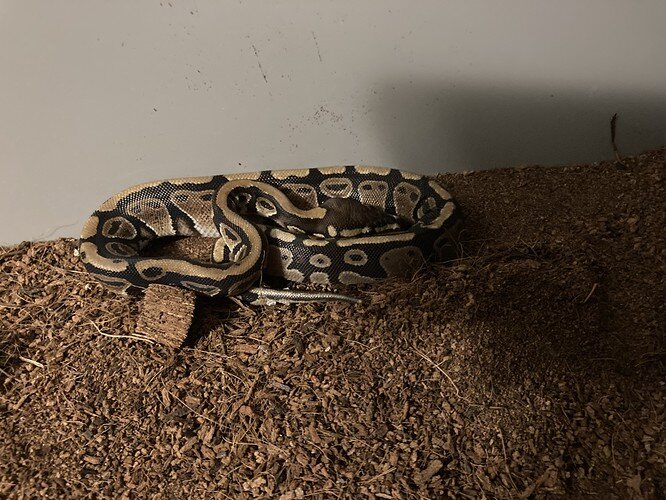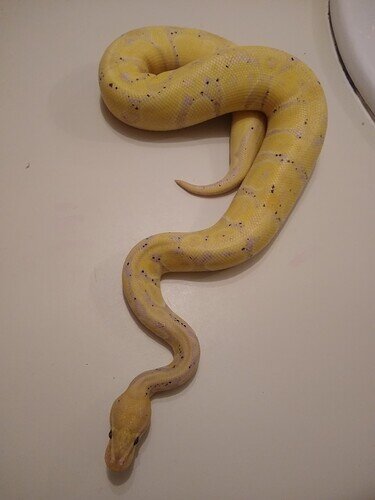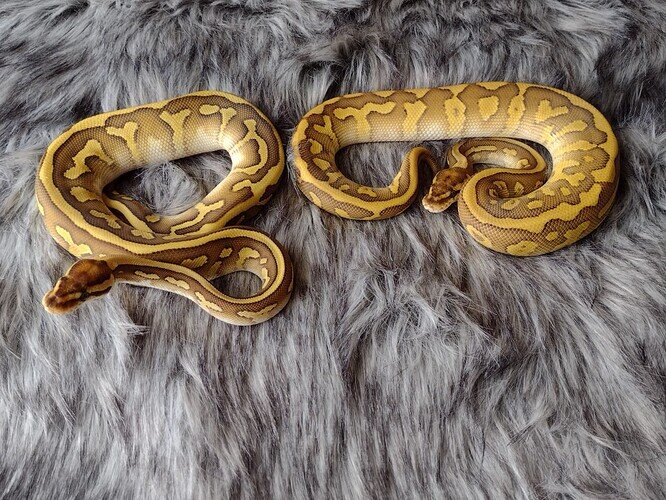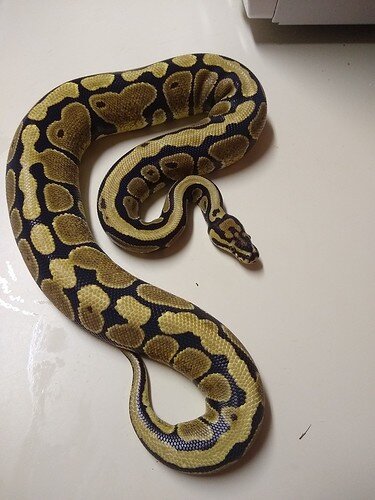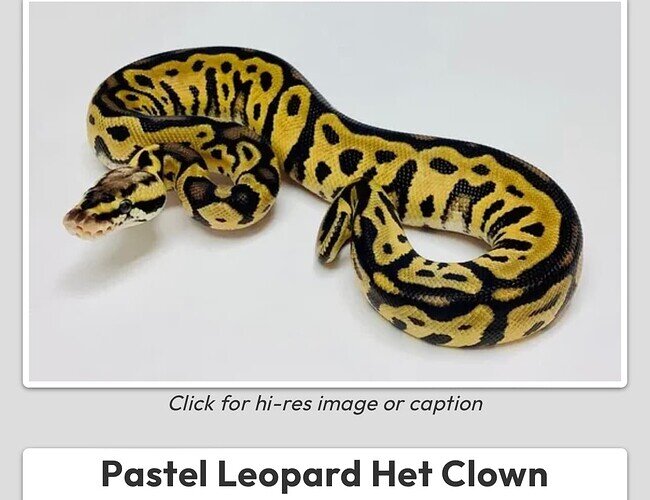With all of this being said, how would you judge these hatchlings? The dame was het clown the sire had 0 clown in him.
I would guess 2/3 and 4 would prove out, being more confident with 2/3
I believe 2&3 are the same animal so I agree w them being generically similar. Lol
They are indeed the same 
I would put Specter above YB as being a better candidate, especially if you know the story behind them
.
.
.
I am surprised they have only found two (maybe we will see more as time goes on.
I know first hand about having two different forms though, I had an Ivory male that threw some babies that were blatantly YB and others that you could never tell. I actually had to provide serious photo-documentation to sell a few of his offspring to people because they refused to believe the labels I had on them on MM
.
.
.
Corey always new it was an inc-dom, he just did not think it needed a special name because he did not view them as being seriously different until he made the RedAx
.
.
.
I would add the Leucy alterna here as well. I do not know how anyone could look at them and think they were NOT inc-dom
I agree, they are a completely identifiable
I didn’t notice if someone already mentioned, but if it was incomplete dom, then wouldn’t hets continue to produce visual markers when bred to non-hets?
Like, a 100% het to a normal would produce a clutch with the odds of 66% of offspring being het clown but with those clutches the likelihood of those visual markers being present seems less common. But some of those animals are still 100% het
This is based on my personal observations of course.
50% would be het clown, not 66%
Yes. I’m unsure if anyone has actually done this, but as talked about before, someone has done this with pied
A 100% het to a normal would be 50% het, not 66%. If it was het to het, then it would be 66%. Breeding a het to a normal doesn’t “dilute” the genes and make them not have “markers”. Think of it as mojave. 50% of the clutch is going to be mojave, but those mojave offspring aren’t going to be lower expression just because the parents were a mojave and a normal
Ah yeah. My bad. 66 is from two hets, right?
Right but I feel like I do see lower expression in the clutches where a visual recessive isn’t involved. But then again, I could just be looking at a bunch of non hets and the odds gods just weren’t playing nice
I’m super new to this but find it fascinating so thanks for bearing with me
There’s always going to be natural variation in all genes. Just because you are breeding a high-expression animal, doesn’t guarantee its offspring will be exactly like it. Some will be, some will be slightly lower, and some higher expression
So I guess what I’m saying/asking would be:
If a “possible het” has zero expression then the chances go to zero (or so close to zero it’s highly unlikely), if clown is an incomplete dom?
If clown always has markers with no exceptions then I would have to agree it is incomplete dom.
I think if we could drum up some images of proven het adults and see if the markers are always present in some fashion that would be helpful.
My eyes are not that well trained yet. I think pied is a high probability of being incomplete dom just because of the variability in expression and the consistent markers evident in het/low expression offspring.
I do see some het clowns that even I can easily identify but there are quite a few where I have absolutely no clue. I will say that there’s a high probability that my opinions will change drastically towards everything as I gain more knowledge!
Would the current snake skins genetic tests sort this out?
I believe they should be considered inc-dom because they do not fit the definition of recessive. Recessives will not show ANY markers when het. Clown (and pied) you can see it, more so in certain combinations. Just because some/a lot of people can’t ID it, doesn’t mean it’s not inc-dom. Take yellowbelly as an example. Most people can’t ID it very well and quite a few can’t ID it at all. And to add onto that, there is a line of yellowbelly that even experienced people can’t ID. Leopard shows het clown really well if you wanted to take a look at those and see if you can see a pattern. The same for leopard het pieds
They would not because they don’t show if they’re inc-dom, dom, or recessive. Only if they’re heterozygous or homozygous
Yes
Since being “het for clown” is a binary state - either they are or aren’t, there’s no such thing as it being watered down in a het to normal paring. Expression is variable on an individual level
Pretty sure this has been done before, but if you want to guess go for it. You’ve got a 50/50 shot at being correct
Find the het clowns:
I’m not even going to attempt that. 
This one is obvious to me. And of course, it’s a leopard
I wasn’t implying the gene itself was diluted. I was saying if clown is incomplete dom then the gene would always be identifiable in some way. If clown is recessive then the markers could be variable but lack of markers doesn’t mean the gene isn’t present
I get what you guys are saying though and definitely have some more homework to do!
I’m still working on trying to figure out all the tricks to IDing it, but I’m going to say 4 and 6 at least.
Not all inc-doms can be ID’ed all the time. Some combos will start to hide or just make it harder to ID certain morphs. There are plenty of animals labeled as “pos inc-dom”. Het clown is for sure subtle and there’s going to be variation from being very obvious (like that pastel leopard) to impossible to ID without breeding. But that doesn’t mean it should be recessive. If we used that logic then the entire YB complex (and more) would be recessive
(whispering sotto voce…) Yeeeeeelloooooowbellllllllyyyyyy
Correct, the snakes in images 2, 4 & 6 are all het clown
![]()
![]()
![]()
